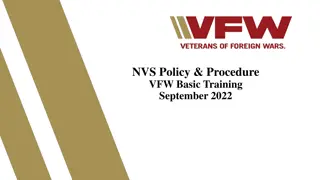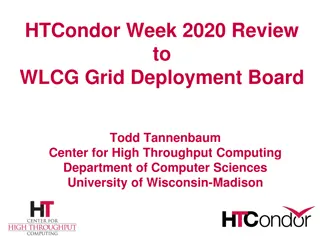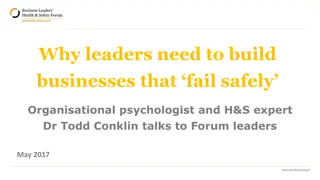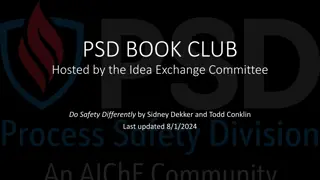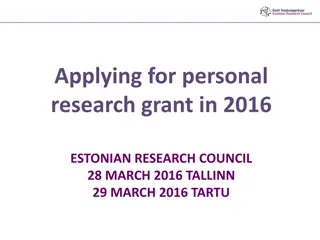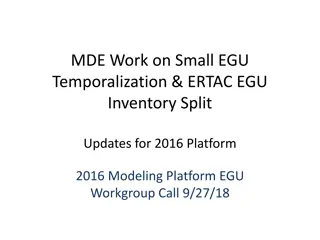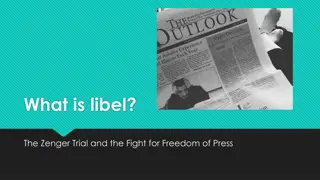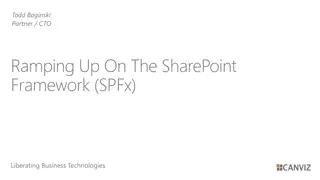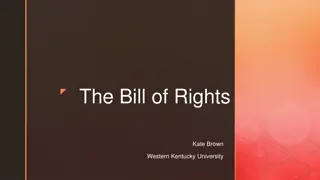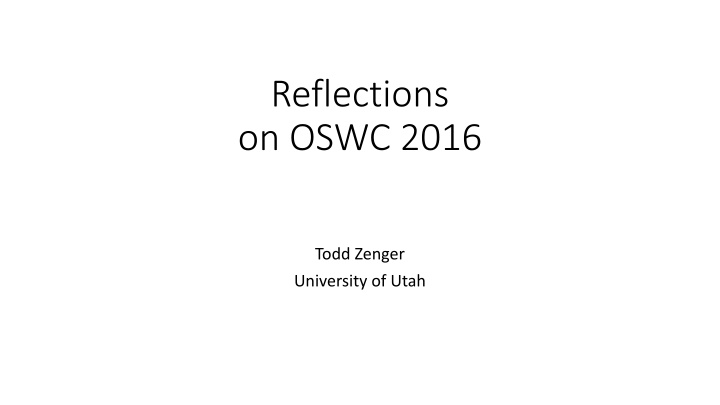
Insights on Organizational Design, Choice, and Innovation from OSWC 2016
Explore the diverse topics covered at OSWC 2016 by Todd Zenger from the University of Utah, delving into themes like contracting for innovation, the impact of organizational structures on innovation, and the role of knowledge sharing. The results emphasize the complexity of seeking and measuring innovation outcomes while highlighting the importance of problem-solving contexts. Dive into discussions ranging from the benefits of different organizational sizes to the dynamics of open source participation and basic research in firms and universities.
Download Presentation

Please find below an Image/Link to download the presentation.
The content on the website is provided AS IS for your information and personal use only. It may not be sold, licensed, or shared on other websites without obtaining consent from the author. If you encounter any issues during the download, it is possible that the publisher has removed the file from their server.
You are allowed to download the files provided on this website for personal or commercial use, subject to the condition that they are used lawfully. All files are the property of their respective owners.
The content on the website is provided AS IS for your information and personal use only. It may not be sold, licensed, or shared on other websites without obtaining consent from the author.
E N D
Presentation Transcript
Reflections on OSWC 2016 Todd Zenger University of Utah
Most topics of this flavor Organizational Design Choice Innovation
Themes Should you (can you) contract for innovation? Are flatter or deeper organizations more innovative? Are lone ideators or teams more innovative? Are self formed or hierarchically assigned teams more innovative? Are small firms, large firms, medium-sized firms more innovative? Are small firms or large firms benefitted more by shock that lowers costs of innovation? Are firms disadvantaged over universities in doing basic research? Does open source participation increase innovation? Does knowledge sharing foster innovation?
It Depends All results shaped by the nature of the innovation being sought, studied, and measured (or the problem being solved).
All results are correct (probably). All results are wrong!
Themes Should you (can you) contract for innovation? Are flatter or deeper organizations more innovative? Are lone ideators or teams more innovative? Are self formed or hierarchically assigned teams more innovative? Are small firms, large firms, medium-sized firms more innovative? Are small firms or large firms benefitted more by shock that lowers costs of innovation? Are firms disadvantaged over universities in doing basic research? Does open source participation increase innovation? Does knowledge sharing foster innovation?
Flat, deep; cent. vs. decent. Small, large Self selection, hier. Selection Gov t vs. Firms Insource vs. outsource Arms length vs. relational Knowledge sharing vs. nominal group Nature of the innovation (PROBLEM)
Relevant problem dimensions (Simon) Problem complexity; decomposability Hiddenness of knowledge deemed relevant
Problem complexity and solution search 0.6 0.5 Individual actors with heterogeneous knowledge can independently explore implications of design choices 0.4 Solution Value 0.3 Low interaction, decomposable 0.2 7.5 0.1 6 4.5 Knowledge set B 0 3 0 0.5 1 1.5 1.5 2 2.5 3 3.5 4 4.5 5 5.5 0 6 6.5 7 7.5 8 Knowledge set A SIMPLE PROBLEMS 0.3 0.25 0.2 Solution value 0.15 Individual actors with heterogeneous knowledge must share knowledge and compose a theory or cognitive representation to efficiently search high interaction, Non-decomposable 0.1 7.5 0.05 6 4.5 Knowledge set A 0 3 0 0.5 1 1.5 1.5 2 2.5 3 3.5 4 4.5 5 5.5 0 6 6.5 7 7.5 8 Knowledge set A COMPLEX PROBLEMS
Hidden Knowledge External Actors External Actors Focal actor Focal Actor Broad or Location Unknown Narrow or Known Location Self selection Central selection
Matching Organizational Approach to Problems
Flat, deep; cent. vs. decent. Small, large Self selection, hier. Selection Gov t vs. Firms Insource vs. outsource Arms length vs. relational Knowledge sharing vs. nominal group
Final Thoughts What drives innovation depends on what innovation we seek. We need more contingent studies of innovation. Therefore, we need to develop an alignment between drivers of innovation and types of innovation Or, match problems to governance forms What are the key dimensions of innovation types or problems that shape governance? How do organizational drivers work differently with different types of innovation?





